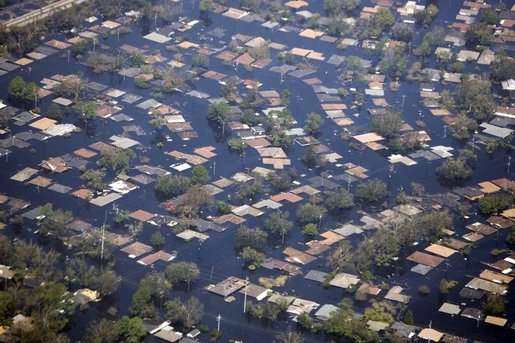Definition
Flood insurance is an important risk management tool that can be applied at various levels: individual, corporate and government. It provides a mechanism for sharing potential economic losses with others. The basic principle is to spread the risks over time, and among individuals and organizations, which pay insurance premium against a specific risk. Insurance can play an important role in a nation’s social and economic recovery by channelling funds for rebuilding purposes through insurance payments. Coupled with the appropriate land use control and flood emergency management measures, flood insurance can serve as a useful tool to deal with residual risks (Associated Programm on Flood Management, accessed on Sept. 2016).Co-benefits and impacts
Insurance can be an important factor in increasing the awareness and reducing the financial risk for individuals, enterprises and even whole societies where natural hazards are concerned. Proper insurance can considerably mitigate the effects that extreme events have on them and can prevent them from being ruined. Flood insurance claims are paid even if a disaster is not declared by Presidential declaration. More than 20 percent of National Flood Insurance Programme claims come from outside of mapped Special Flood Hazard Areas. Flood insurance policies are continuous, and are not non-renewed or cancelled for repeat losses. Flood insurance reimburses people for covered building losses for residential occupancies and for businesses (FEMA, 2012, accessed on Sept. 2016 ).Definition (GR)
Η ασφάλιση για καταστροφές από πλημμύρες είναι ένα σημαντικό εργαλείο διαχείρισης κινδύνου που μπορεί να εφαρμοστεί σε διάφορα επίπεδα: ατομικά, εταιρικά και κρατικά. Παρέχει ένα μηχανισμό διαμοιράσματος πιθανών οικονομικών ζημιών. Η βασική αρχή είναι ο επιμερισμός των κινδύνων στο χρόνο, όπως και μεταξύ ατόμων και φορέων, που πληρώνουν ασφάλιστρα για συγκεκριμένο κίνδυνο. Η ασφάλιση μπορεί να παίξει σημαντικό ρόλο για την κοινωνική και οικονομική ανάκαμψη ενός έθνους διοχετεύοντας κεφάλαια για τους σκοπούς της ανασυγκρότησης μέσω των ασφαλιστικών πληρωμών. Σε συνδυασμό με τον κατάλληλο έλεγχο της χρήσης γης και τα μέτρα διαχείρισης έκτακτων καταστάσεων πλημμύρας, η ασφάλιση για καταστροφές από πλημμύρες μπορεί να χρησιμεύσει ως ένα χρήσιμο εργαλείο διαχείρισης των κινδύνων που εξακολουθούν να υφίστανται (Associated Programm on Flood Management, accessed on Sept. 2016).Co-benefits and impacts (GR)
Η ασφάλιση μπορεί να είναι ένας σημαντικός παράγοντας αύξησης της συνειδητοποίησης και της μείωσης του οικονομικού ρίσκου για τα άτομα, τις εταιρείες, ακόμα και ολόκληρες κοινωνίες που κινδυνεύουν από φυσικούς κινδύνους. Η κατάλληλη ασφάλιση μπορεί να μετριάσει σημαντικά τις συνέπειες των ακραίων γεγονότων και να αποτρέψει την καταστροφή. Οι διεκδικήσεις της ασφάλισης για καταστροφές από πλημμύρες πληρώνονται ακόμα κι αν η φυσική καταστροφή δεν αναγνωρίζεται από νομοθετικό διάταγμα. Πάνω από το 20% των διεκδικήσεων του Εθνικού Προγράμματος Ασφάλισης για Καταστροφές από Πλημμύρες προέρχονται εκτός των χαρτογραφημένων Περιοχών Ειδικού Πλημμυρικού Κινδύνου. Οι πολιτικές αυτής της ασφάλισης είναι συνεχείς και δεν ανανεώνονται ούτε ακυρώνονται για επαναλαμβανόμενες ζημιές. Οι ασφαλίσεις για τις καταστροφές από πλημμύρες αποζημιώνουν άτομα καλύπτοντας κτιριακές ζημιές σε κατοικίες και επιχειρήσεις (FEMA, 2012, accessed on Sept. 2016 ).Legislation
Problem types
Problem types for which this measure can be applied.
Land uses
Land uses in which this measure can be applied.
Last modified: March 4, 2020, 9:04 a.m.


 Ελληνικά
Ελληνικά
